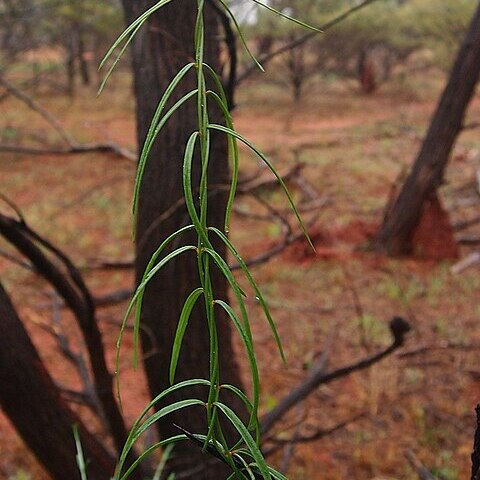A slender climber. It grows 103 m high. The stems are twining and have milky sap. The leaves are opposite and 5-10 cm long by 0.2-0.4 cm wide. They are narrow, thick and dull green. There are 6-15 flowers in a group. They occur in the axils of leaves. The flowers are bell-shaped and 0.8 cm long. They are yellow or green. The follicle or fruit is many seeded and dry. It is 6-10 cm long by 2-2.5 cm wide. It is pear shaped and softly hairy. It has a reddish colour. It splits open when ripe. The seeds are 0.6-0.8 cm long by 0.4 cm wide. They are black and have tufts of hair about 2 cm long.

